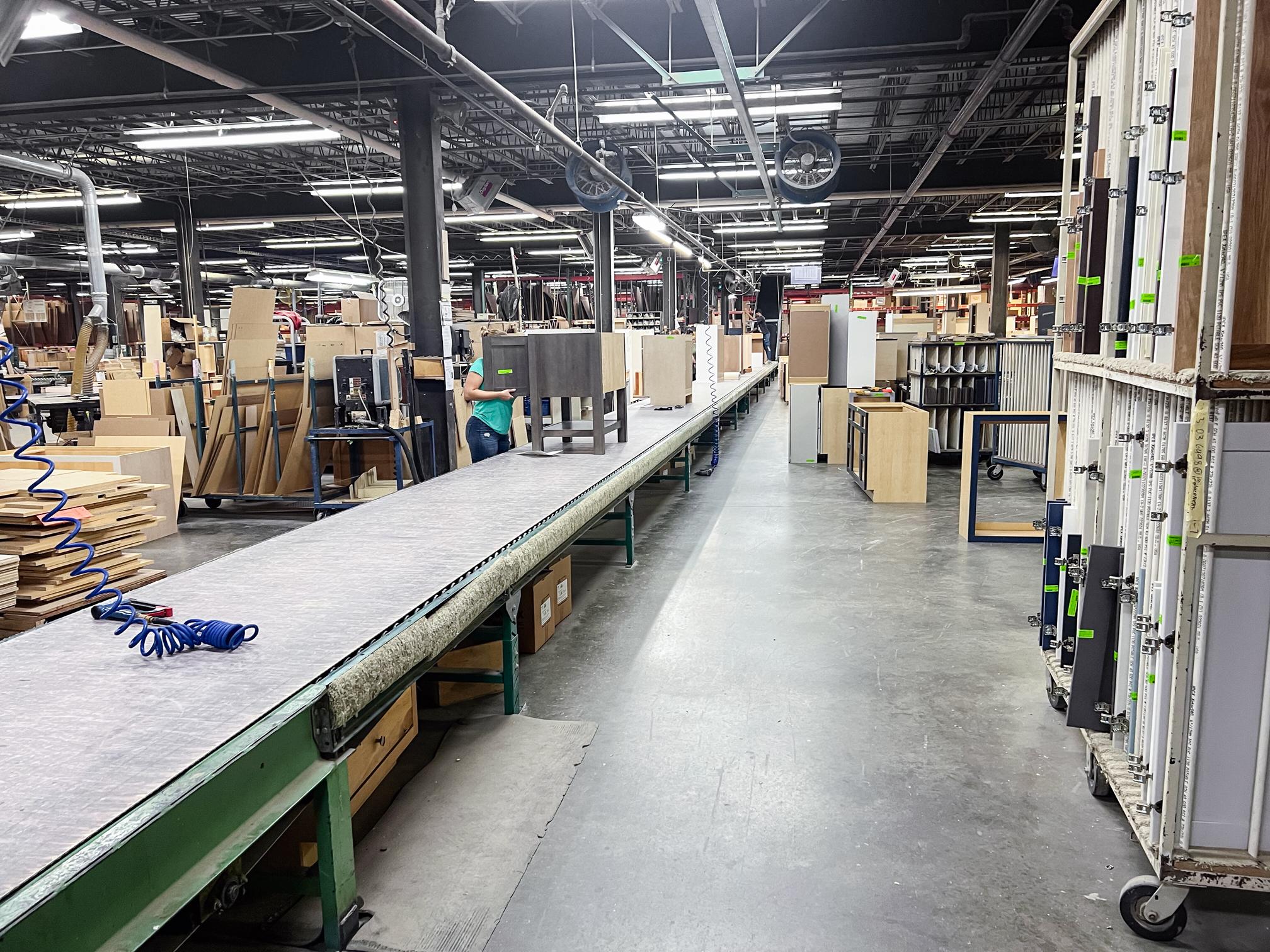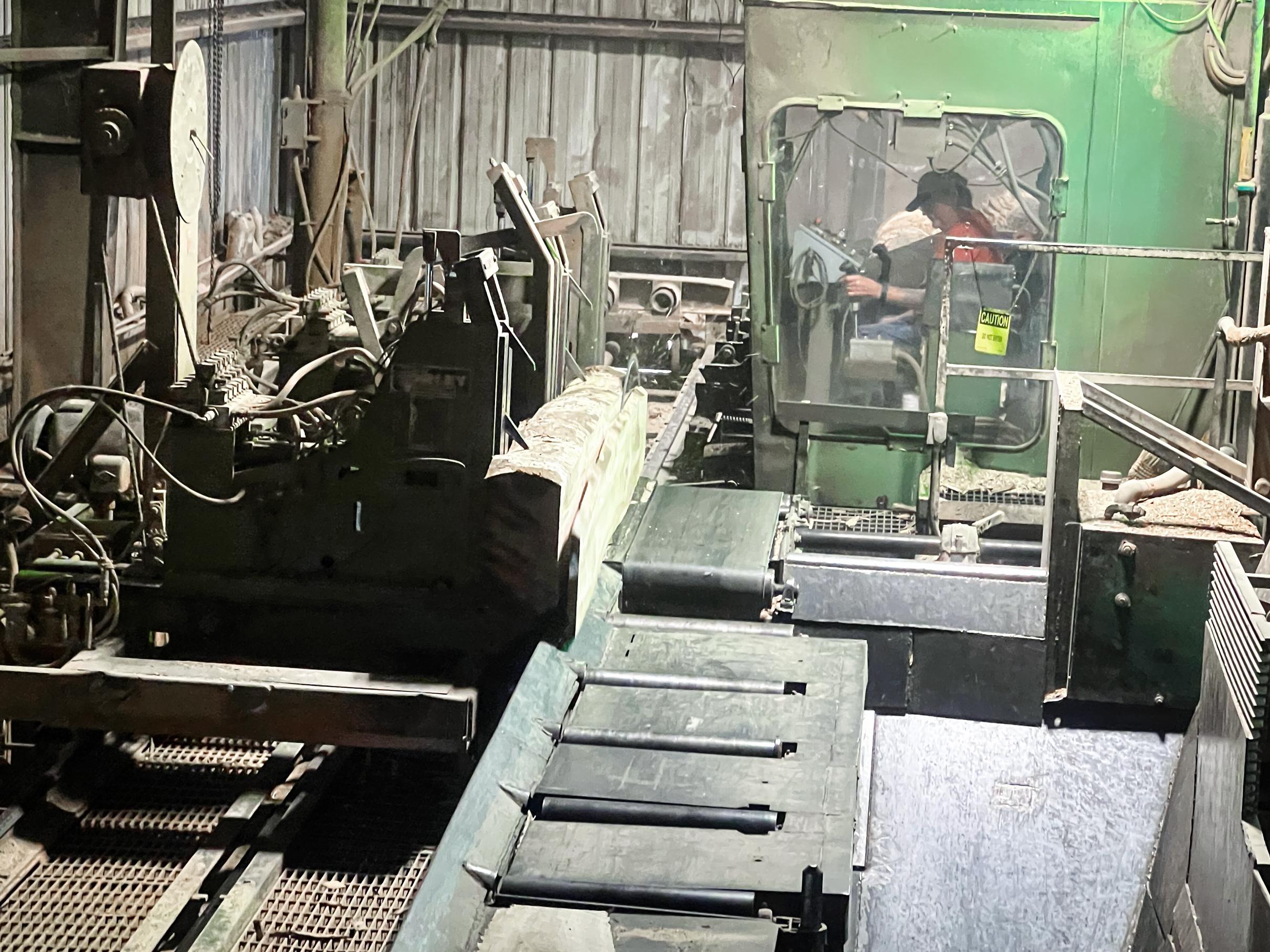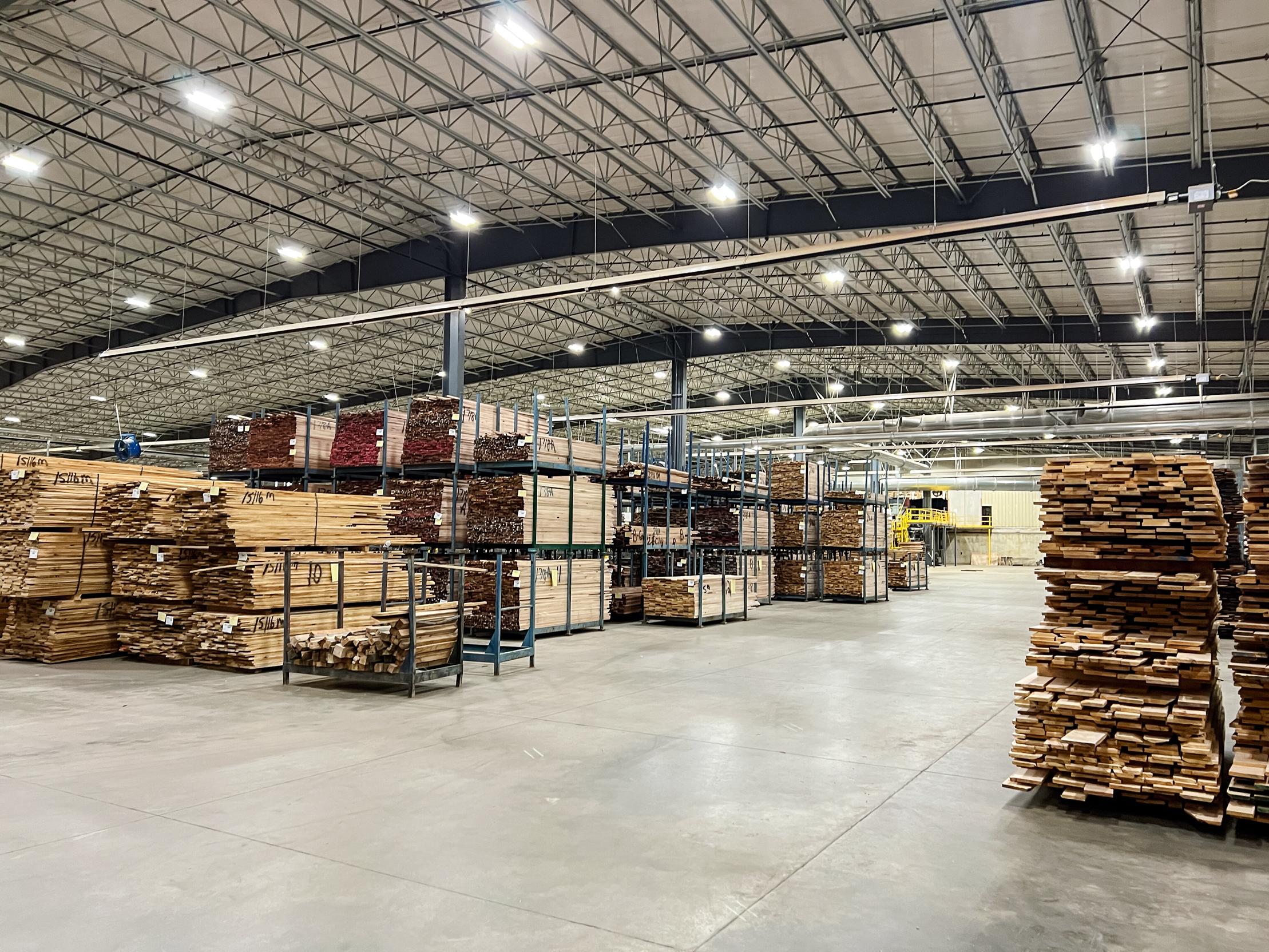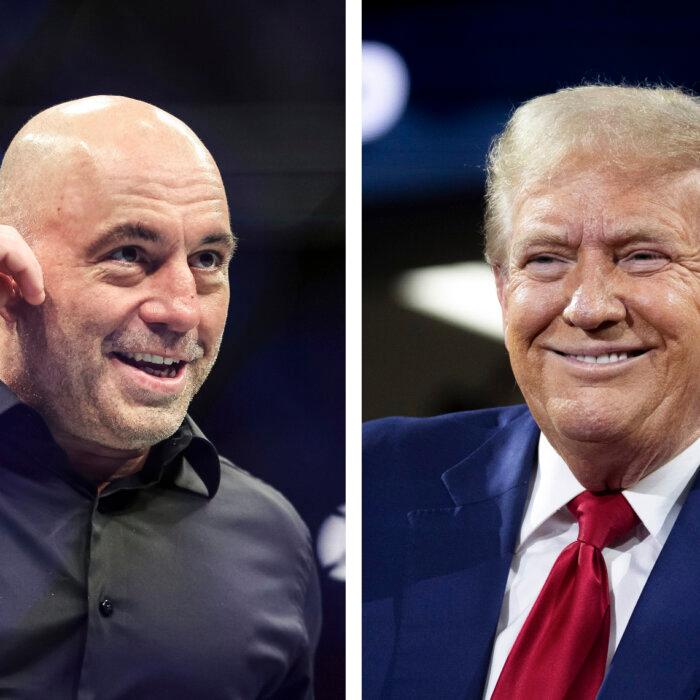At the Kitchen & Bath Industry Show in Las Vegas in 2005, an American kitchen cabinet maker was faced with unfair Chinese competition face-to-face for the first time.
A Chinese man was selling cabinets using the American business owner’s marketing brochure.
Paul Wellborn, the owner of Wellborn Cabinet, recognized the Chinese man—he had visited Wellborn’s factory in Alabama not long prior, posing as a prospective customer. Wellborn confronted the competitor.
“He just laughed and said: ‘We sell Gucci purses. We make all this stuff, and nobody can do anything about it,’” Wellborn recalled.
Wellborn said this encounter provided him an “incentive” to “fight for what’s right.” He paid about $14,000 in legal fees to ensure the man would stop using Wellborn brochures. Then, almost 15 years later, when he realized that his business was at risk due to Chinese cabinet dumping, he sought tariffs for self-protection.
That’s when he crossed paths with former President Donald Trump. In 2017, he met with Trump in Milwaukee regarding those challenges.
During this election season, Trump has repeatedly mentioned the kitchen cabinet industry as a beneficiary of tariffs he implemented during his first term.
The Republican presidential nominee said, if reelected, he would impose a universal 10 percent tariff on all imports and a 60 percent tariff on those from China.
Tariffs have been a contentious issue in this election.
Democratic presidential nominee Vice President Kamala Harris called tariffs “Trump sales tax.” Yet the Biden–Harris administration kept all the Trump tariffs on more than $300 billion worth of Chinese goods—about three-quarters of the total U.S. imports from China—and hiked the rates on $18 billion worth of Chinese imports, such as electric vehicles, chips, and solar panels.
When announcing the new rates in May, President Joe Biden said the tariff increase would protect American industries from “China’s policy-driven overcapacity that depresses prices and inhibits development.”
During the annual meeting week of the International Monetary Fund (IMF) and the World Bank in late October, Treasury Secretary Janet Yellen reiterated her concerns regarding China’s industrial overcapacity. She said China had yet to solve the fundamental issue she emphasized during her trip to Beijing in April—that China was producing more than its domestic demand and dumping cheap products worldwide.
Meanwhile, voters have mixed views.
An early October NBC poll found that a little more than one-third of voters support broad-based tariffs, while a mid-September Reuters/Ipsos survey found 56 percent of voters support Trump’s tariff proposal, which would impose a universal 10 percent tariff on all imports and a 60 percent tariff on those from China.
The Peterson Institute for International Economics estimated that Trump’s tariff plan would cost an average American household $2,600 annually. According to the Yale Budget Lab, that annual cost would fall between $1,900 and $7,600.
Trump has continued championing tariffs on Chinese goods, despite the criticism.



“The most beautiful word in the dictionary is tariff,” Trump told the Economic Club of Chicago on Oct. 15. “It’s my favorite word.”
At the same event, he said he met a cabinet maker who told him, “Sir, China and South Korea are building kitchen cabinets for a third of what I can make them … I can’t compete.”
A few years later, the same person told him, “You saved my company when you did the tariff, and you saved thousands of jobs. My company is now doing very well.”
Wellborn believes Trump was referring to him. Although it’s difficult to confirm, his story matches up.
Wellborn Goes to Washington
After the first encounter in 2005, Wellborn Cabinet, headquartered in Ashland, Alabama, survived the Great Recession between late 2007 and mid-2009—when many American households couldn’t pay their mortgages—by offering a broad range of products.
However, when the market began to recover, the business didn’t grow; instead, between 2007 and 2020, it shrank from 2,000 to 1,200 workers, down 40 percent.
Shaker style cabinets, with their minimal design, enabled Chinese manufacturers to dominate the market by selling ready-to-assemble (RTA) products. U.S. distributors imported RTA pieces and assembled them for domestic sale. These prices are usually 20 percent to 60 percent lower than their made-in-America peers.
By 2018, China had taken over 40 percent of the market. That year, cabinet imports from China topped more than $4 billion in the $10 billion industry.
The same year, Wellborn spoke to Sen. Richard Shelby (R-Ala.), who advised him to file his case. Shelby said that many people were upset about China, according to Wellborn.
In March 2019, Wellborn Cabinet became a founding member of the American Kitchen Cabinet Alliance, and the nonprofit filed a petition with the Department of Commerce. A year later, the department concluded that the Chinese cabinets were sold at “less than fair value” in the United States. Concurrently, the International Trade Commission found that the domestic Cabinet industry was harmed by cabinet imports subsidized by the Chinese regime.

As a result, importers of Chinese cabinets had to pay tariffs of up to 300 percent.
Wellborn said he visited Washington almost weekly during the one-year fight, and other cabinet companies did the same.
“I really felt good when we won our case,” he said.
Wellborn told The Epoch Times that all the effort he and others had made for almost four years had helped.
“It helped all the American families. That makes me feel good because all these families here still have jobs. These are our friends and families.”
The Chinese man at the 2005 trade show came to his mind. “If you feel like you’re fighting for what’s right, you know you don’t give up,” he added. “You never give up.”

Wellborn said he’s not against Chinese people in China, but he disapproves of the regime-driven unfair competition. Chinese products are cheap and look good, but they don’t last long, he said.
He pointed to the chair he sat on in his company’s conference room at the headquarters. The chairs had lasted 50 years, and they only needed new covers.
In October, he turned 80. “This is my life, and my family is here,” he said of the cabinet business he built from scratch with his brother. “I really enjoy it. I enjoy going down and looking at the logs coming into our sawmill” and following the process the whole way through.
The Case for Tariffs
Yellen said on Oct. 22, during the IMF and World Bank annual meetings in Washington, that broad-based tariffs would result in higher domestic prices and weigh on U.S. firms’ competitiveness to export goods.
“Sweeping, untargeted tariffs would raise prices for American families and make our businesses less competitive,” she also told members of the Council on Foreign Relations on Oct. 17, calling universal tariffs “deeply misguided.”
Economists generally agree that tariffs would cause price increases, and the cost of tariffs is usually borne by U.S. importers and consumers. Where they disagree is whether Trump’s tariffs are inflationary.
Peter Morici, a former director of the Office of Economics at the U.S. International Trade Commission, told NTD, The Epoch Times’ sister television network, that he doesn’t think Trump’s tariffs plan would fuel inflation, given that the 2018 and 2019 levies didn’t produce inflation and that Trump would have the option to phase-in the import taxes over four years.
An open letter signed by 16 Nobel Prize-winning economists in June said Trump’s economic plan would increase inflation, although the experts didn’t specifically call out the tariffs’ impact.
Others see Trump’s tariffs plan as a negotiation tool to achieve a trade deal similar to the Phase One U.S.–China trade deal signed in 2020.
A 2023 study by the U.S. International Trade Commission reviewed the impact of Section 301 tariffs from 2018 to 2021. Section 301 of the Trade Act of 1974 authorizes U.S. presidents to impose tariffs to counter unfair trade practices or violations of trade agreements. The commission estimated that tariffs decreased imports from China by 13 percent each year during the four years. The study also found that prices of domestic products in the sectors affected by the tariffs increased by 0.2 percent, and U.S. domestic production increased by 0.4 percent.
“Just like 2016, Wall Street and so-called expert forecasts said that Trump policies would result in lower growth and higher inflation,” Brian Hughes, a Trump campaign senior adviser, wrote via email to The Epoch Times.
“The media took these forecasts at face value, and the record was never corrected when actual growth and job gains widely outperformed these opinions.”
From the perspective of national security, the cost of tariffs may be necessary.

Tariffs are necessary to fend off China’s predatory practice of dumping its state-subsidized overcapacity onto global markets, “driving manufacturers around the world out of business and creating a choke hold on supply chains,” White House national security adviser Jake Sullivan said in a speech at the Brookings Institution in Washington on Oct. 23.
According to the Kitchen Cabinet Manufacturers Association, tariffs worked for the cabinet industry.
Betsy Natz, the organization’s chief executive officer, said that importers’ stocking up on Chinese imports before the tariffs went in place in 2020 “only delayed the effectiveness of the relief by a matter of months.”
“The tariffs are now doing their job at keeping unfairly traded imports of Chinese cabinets out of the U.S. market,” she told The Epoch Times, adding that the monthly imports from China were $160 million at their peak in 2018, compared to the current run rate of $2 million.

She said cheaper imports would likely extinguish the domestic industry and eventually result in higher prices in a market monopolized by foreign players.
In 2019 and 2020, the main opponent to the cabinet tariffs was the American Coalition of Cabinet Distributors (ACCD), which represented the importers.
In a February 2020 statement, ACCD member Randy Goldstein, CEO of Kitchen Cabinet Distributors, accused the pro-tariff organizations of “taking advantage of the trade hysteria against China” and “attempting to eradicate a small but important market segment traditionally supplied by China.”
The Facebook page of the American Coalition of Cabinet Distributors has been inactive since March 2020, and its website listed on the Facebook page doesn’t appear to be operational. The Epoch Times contacted Goldstein for an updated comment but didn’t receive a response.
For the pro-tariff trade organizations, the fight goes on.
In July, the Department of Commerce determined that wooden cabinets, vanities, and their components imported from Malaysia and Vietnam will be covered under the same China tariffs. The two cabinet maker associations filed a case with the department to close the loophole allowing Chinese exporters to route their shipments from those two countries to circumvent the tariffs.
The current tariffs are scheduled for a routine five-year review next year. The review will determine whether the levies will be revoked or kept for another five years.
“We strongly believe that the tariffs need to remain in place at this time,” Natz said.





